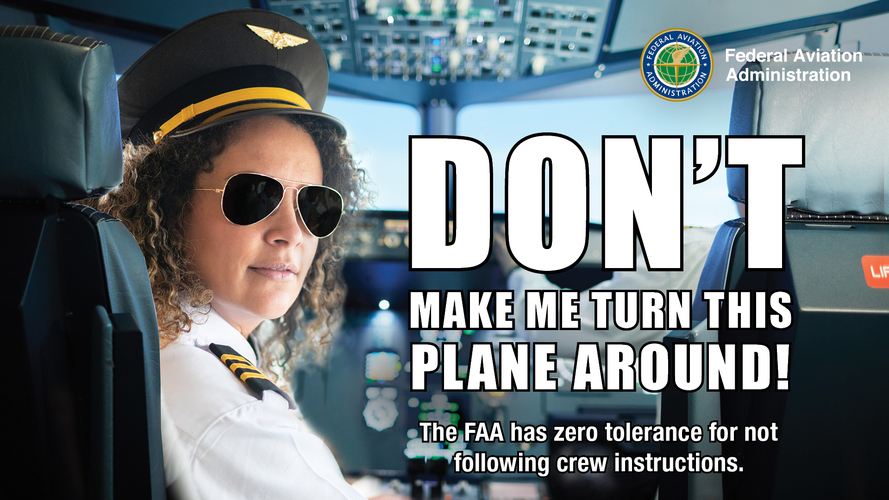BRATTLEBORO — Erica Jong, author of Fear of Flying, wrote about more than her own fear of flying in her bestselling novel, but she did manage to capture my own feelings whenever I board a hunk of a silver vessel about to hurtle across the sky.
“My fingers (and toes) turn to ice,” she wrote, “my stomach leaps upward into my rib cage, the temperature in the tip of my nose drops to the same temperature in my fingers, [...] and for one screaming minute my heart and the engines correspond as we attempt to prove again that the laws of aerodynamics are not the flimsy superstitions which, in my heart of hearts, I know they are.”
I never give in to my fear of flying because I love to travel, and like most of us I think, “It can't happen to me.”
But what's been occurring in aviation recently has ratcheted up my anxiety.
It doesn't help that I am writing this commentary prior to a trip that involves several flights, two of them transatlantic, which means there's nowhere to land in an emergency between London and Boston except Iceland.
Nor am I assuaged after PTSD memories of a flight over the Andes in which the turbulence was so intense I wondered if I'd be forced to eat survivors as we waited for rescue.
Then there was the close-as-it-gets landing in Honduras some years ago when two aircraft rounded a mountain simultaneously while trying to land.
Now, my anxiety is heightened by recent near misses. A commercial aircraft and a private jet were within seconds of crashing into each other on a runway when the pilot of the smaller plane ignored air traffic control instructions to wait for a JetBlue plane to land in front of it.
This was only one of several incidents involving near misses. “Experts say near-misses on runways are more common than the traveling public may realize,” NBC News reported in March.
According to FAA data, 1,732 runway incursion incidents were reported during the agency's fiscal year 2022, which is on par with pre-pandemic totals (1,832 incidents in FY 2018, for instance).
Then there's the cluster of potential disasters taking place in aircraft cabins.
The FAA's year-end totals for 2022 are shocking. Nearly 2,500 episodes of unruly passengers were reported. More than 800 investigations of incidents were initiated, and more than 500 enforcement actions were started.
In March of this year, a man tried to stab a flight attendant on a flight from Los Angeles to Boston, and cabin crews report having suffered various physical attacks as well as sexual harassment.
According to the flight attendants union, flight crews have “call[ed] on the entire airline industry to step up to combat harassment and recognize the impact it has on safety. [...] Airlines must also ensure that staffing levels on flights are sufficient.”
* * *
It's also clear that climate change and global warming have played a part in increased episodes of severe turbulence.
The research is clear: “Earth's warming, the result of the burning of fossil fuels, is increasing the risks of bumpy flights,” The Washington Post reported in March. “It has to do with ways warming in the atmosphere influences winds at varying altitudes.”
In December, 36 passengers on a flight to Hawaii were injured, and in March a Lufthansa flight from Houston to Frankfurt had to make an emergency landing at Dulles International Airport in Virginia.
* * *
Despite all these worries, I realize in my rational moments that air travel is statistically safer than getting into your car. I know that like cars, airplanes are for most of us a necessary part of modern life.
Still, there is something about flying that kicks in when I board a plane and the aircraft door is sealed. As the engines rev, and the safety instructions, which we all know are pretty useless, are demonstrated, I think of Erica Jong, who admitted that “constant vigilance” was her motto.
“So I keep concentrating very hard, helping the pilot […] fly that 250-passenger motherf--r,” she said.
Believe me, these days I relate to that more than ever.
* * *
Political commentator and comic Dennis Miller, along with Erica Jong, have both captured my own aerophobia (a real word), which is nice. It gives me something to laugh at when the going gets rough.
“My fear of flying,” Miller shared, “starts as soon as I buckle myself in and then the guy up front mumbles a few unintelligible words [and] then before I know it I'm thrust into the back of my seat by acceleration that seems way too fast and the rest of the trip is an endless nightmare of turbulence, of near misses. And then the cabbie drops me off at the airport.”
So, here's to all the other fearful passengers out there as we buckle up. Long may we fly high until we reach our destinations, which is more than likely to happen.
Right?
